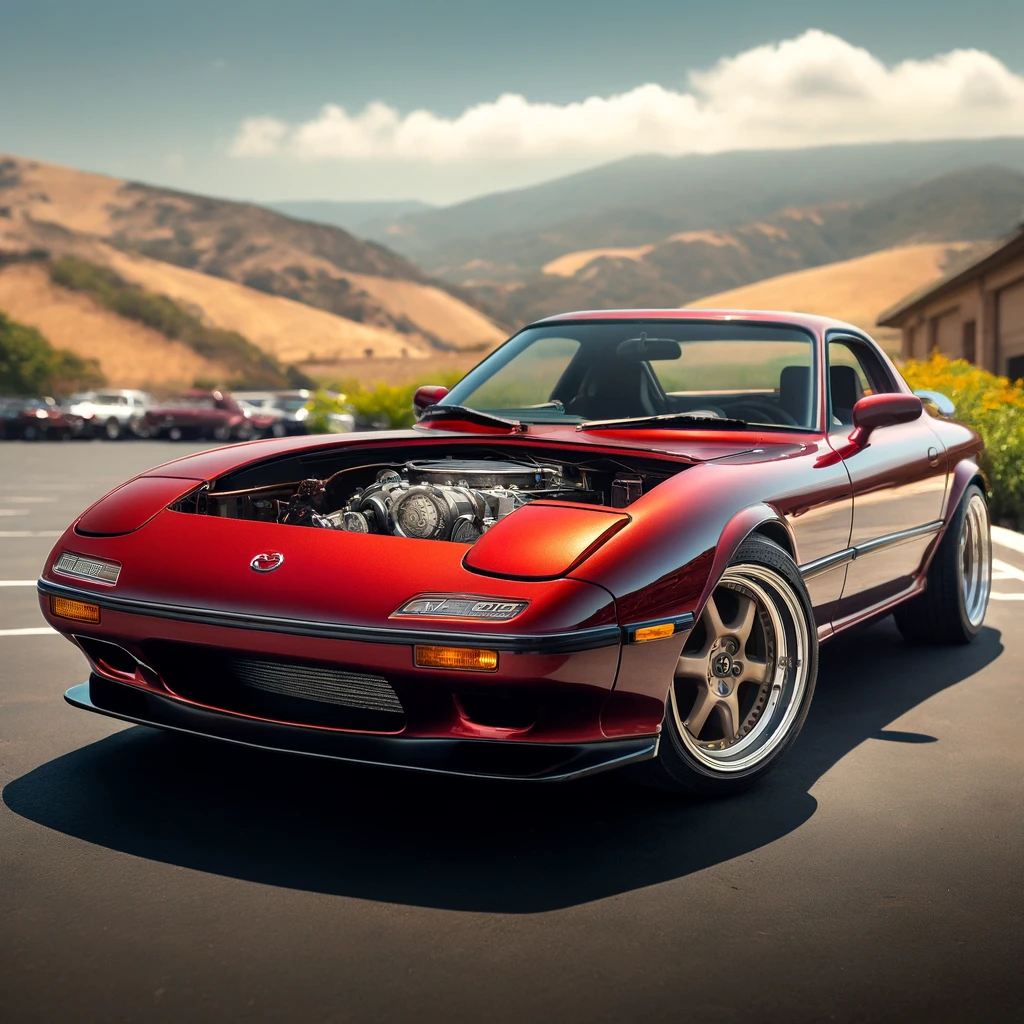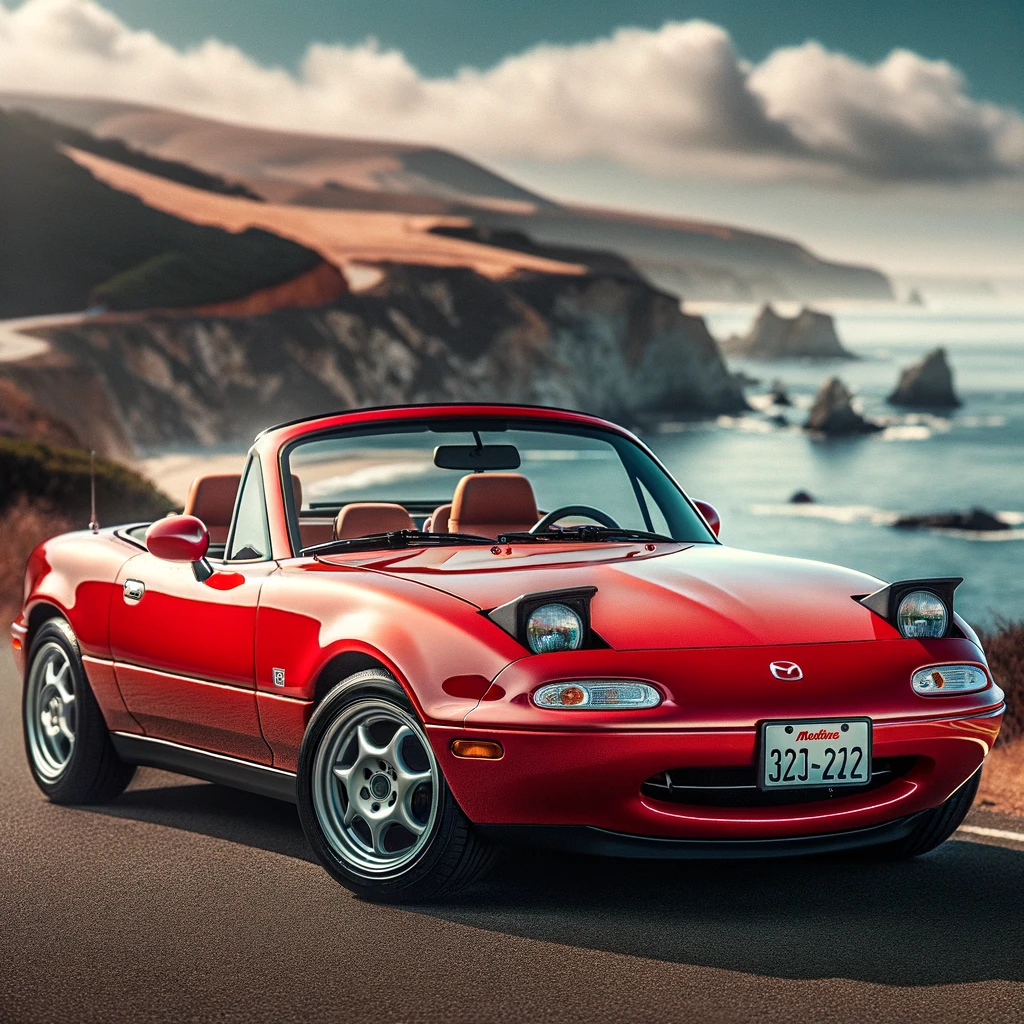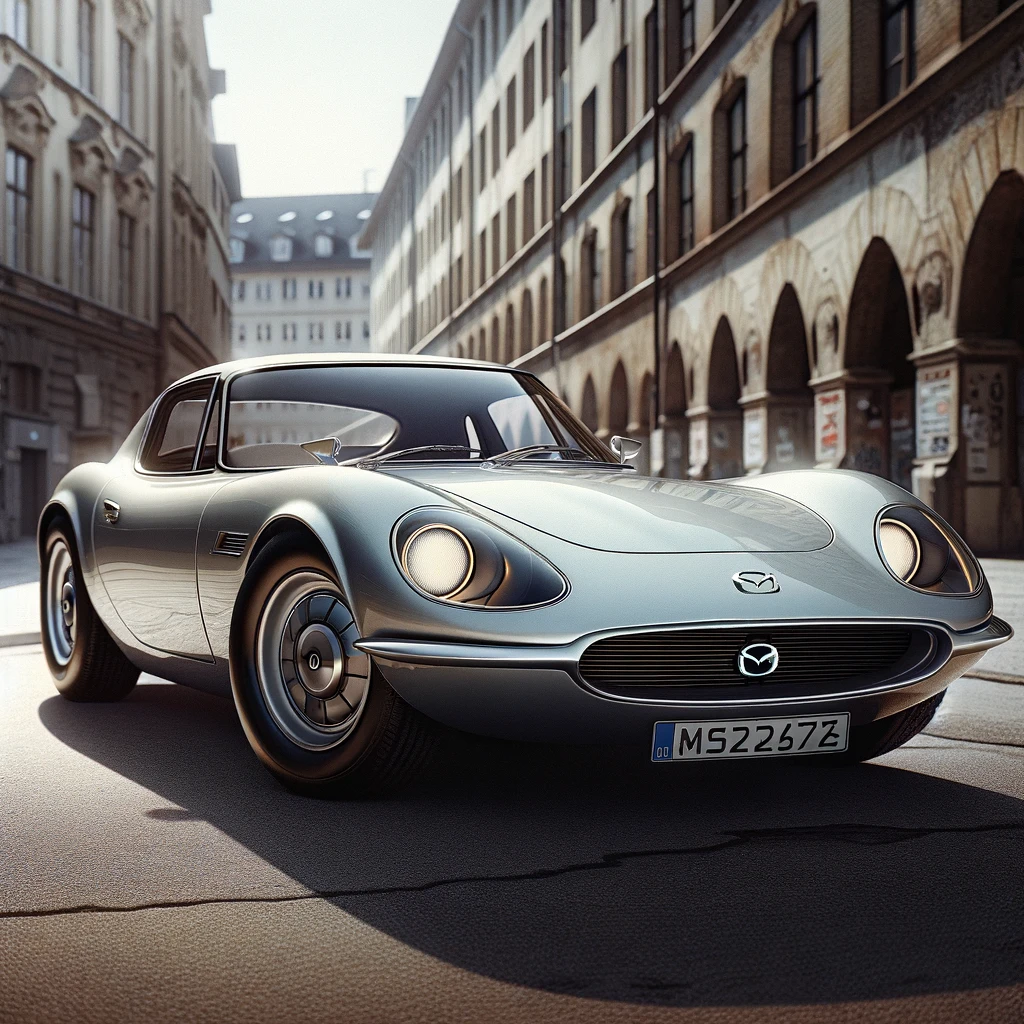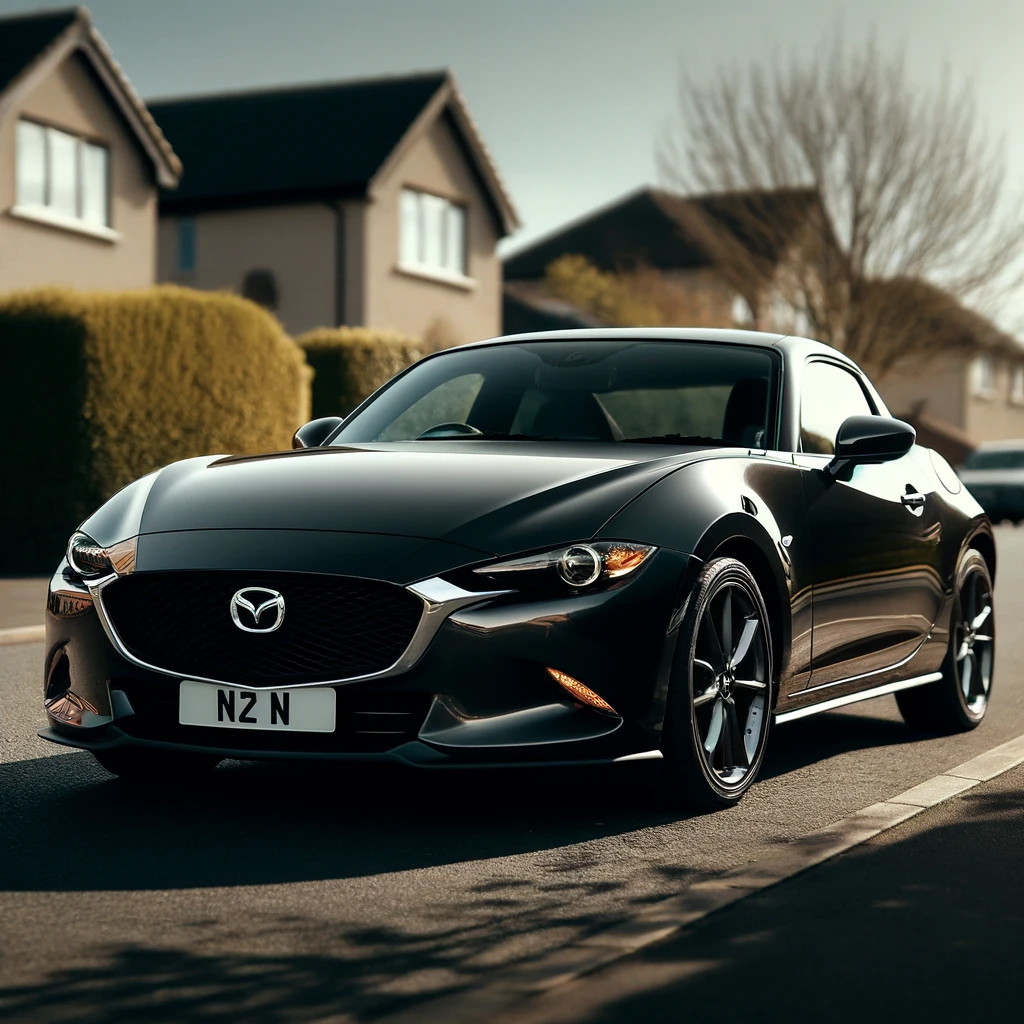Mazda has a rich history of producing some of the most iconic sports cars in automotive history. From classic models to modern marvels, Mazda’s lineup has always been synonymous with performance, style, and innovation. In this article, we’ll take a nostalgic journey through some of the best vintage Mazda sports cars that have captured the hearts of enthusiasts worldwide.
The Classic Mazda RX-7

The Mazda RX-7 is perhaps the most iconic sports car to come out of the Mazda stables. Known for its sleek design and rotary engine, the RX-7 has become a legend in the automotive world.
A Revolutionary Rotary Engine
One of the defining features of the RX-7 is its rotary engine, also known as the Wankel engine. Unlike traditional piston engines, the rotary engine uses a unique design that allows for higher RPMs and a smoother power delivery. This innovative engine design contributed to the RX-7’s reputation for high performance and agility.
Generations of Excellence
The RX-7 was produced over three generations, each bringing significant advancements and refinements:
- First Generation (SA/FB, 1978-1985): The original RX-7 featured a lightweight, compact design with a front-midship, rear-wheel-drive layout. It was powered by a 1.1L or 1.3L rotary engine, which provided excellent handling and balance. The first-generation RX-7 quickly gained a reputation for being a driver’s car, offering an engaging and thrilling driving experience.
- Second Generation (FC, 1986-1991): Inspired by the Porsche 924, the second-generation RX-7 introduced a more sophisticated suspension setup and a turbocharged version of the 1.3L rotary engine. This generation emphasized a balance of performance and comfort, making it a more refined sports car. It also featured more advanced technology, such as a new independent rear suspension and an optional convertible model.
- Third Generation (FD, 1992-2002): The third-generation RX-7 is often considered the pinnacle of the RX-7 lineup. It featured a twin-turbocharged 1.3L rotary engine, producing up to 276 horsepower in some markets. The FD RX-7 was lauded for its striking design, which combined sleek lines with aggressive styling. It also boasted exceptional handling and performance, making it a favorite among car enthusiasts and racers.
Performance and Handling
The RX-7’s lightweight chassis and near-perfect weight distribution contributed to its exceptional handling characteristics. The rotary engine’s compact size allowed Mazda to position it further back in the engine bay, enhancing the car’s balance and agility. The RX-7’s suspension setup, which varied across generations, was always designed to provide a responsive and engaging driving experience.
Cultural Impact
The RX-7 has left a lasting impact on car culture, particularly in motorsports and tuning communities. It has been a popular choice for racing, including in series like IMSA and Super GT. Additionally, the RX-7 has become a beloved platform for modification and customization, with enthusiasts enhancing its performance and aesthetics in countless ways.
Legacy
Today, the RX-7 is celebrated as a classic and is highly sought after by collectors and enthusiasts alike. Its innovative rotary engine, timeless design, and thrilling driving dynamics have ensured its place in automotive history. The RX-7’s legacy continues to influence Mazda’s sports cars and inspire a new generation of drivers.
Mazda Miata: The Timeless Roadster

No discussion about Mazda sports cars is complete without mentioning the Mazda Miata. Since its debut in 1989, the Miata has been the quintessential affordable sports car, delivering a pure driving experience.
A Modern Classic
The Mazda Miata, also known as the MX-5 in some markets, was introduced in 1989 and quickly became a sensation. It was designed to capture the spirit of classic British roadsters while incorporating modern reliability and technology. The Miata’s lightweight construction, rear-wheel drive, and perfect weight distribution made it an instant hit among driving enthusiasts.
Generations of the Miata
The Miata has evolved through several generations, each retaining the core principles of lightweight design and driving enjoyment:
- First Generation (NA, 1989-1997): The original Miata, with its pop-up headlights and simple, elegant design, was an homage to the classic roadsters of the 1960s. It featured a 1.6L or 1.8L inline-four engine, delivering modest power but exceptional handling and balance. The NA Miata’s charm lay in its simplicity and purity, providing an unfiltered driving experience.
- Second Generation (NB, 1998-2005): The second-generation Miata saw the introduction of fixed headlights and a slightly more powerful 1.8L engine. While maintaining the lightweight philosophy, the NB brought refinements in safety, comfort, and performance. It also introduced a six-speed manual transmission and an optional limited-slip differential, enhancing its sporty credentials.
- Third Generation (NC, 2006-2015): The NC Miata marked a departure from the previous generations with a more robust chassis and increased dimensions. It featured a 2.0L engine, offering more power while still preserving the car’s agility. The NC also introduced a power retractable hardtop option, providing a blend of coupe-like comfort and open-air driving pleasure.
- Fourth Generation (ND, 2016-present): The latest Miata returned to its roots with a lighter, more compact design. The ND Miata features a 2.0L SKYACTIV-G engine, delivering improved efficiency and performance. It continues to prioritize driver engagement, with responsive steering, agile handling, and a comfortable yet sporty interior. The ND also includes advanced safety and technology features, making it the most refined Miata yet.
Performance and Driving Experience
The Miata’s success lies in its focus on delivering a pure, unadulterated driving experience. Its front-engine, rear-wheel-drive layout, combined with precise steering and a balanced chassis, provides exceptional handling and feedback. The Miata’s engines, while not overly powerful, are perfectly matched to its lightweight construction, ensuring brisk acceleration and nimble performance.
Affordability and Accessibility
One of the Miata’s most remarkable achievements is its affordability. Mazda has consistently kept the Miata within reach of a broad audience, making it one of the most accessible sports cars on the market. Its reliability and relatively low maintenance costs further enhance its appeal, allowing more people to enjoy the thrill of driving a sporty Mazda.
Cultural Impact and Enthusiast Community
The Miata has cultivated a passionate and dedicated enthusiast community. Its popularity in motorsports, such as autocross and club racing, has cemented its reputation as a true driver’s car. The Miata’s simplicity and ease of modification have also made it a favorite among tuners and customizers, leading to a vibrant aftermarket scene.
Legacy
The Mazda Miata’s legacy is one of enduring appeal and timeless design. It has consistently been praised by automotive journalists and drivers alike for its blend of performance, style, and affordability. As a Mazda 2-door sports car, the Miata continues to inspire and excite, proving that driving pleasure doesn’t have to come at a high cost.
The Legendary Mazda Cosmo

The Mazda Cosmo holds a special place in automotive history as the first car to feature a rotary engine. Its futuristic design and advanced engineering made it a standout in the 1960s.
A Pioneer in Automotive Innovation
The Mazda Cosmo, also known as the Mazda Cosmo Sport 110S, debuted in 1967. It was not only Mazda’s first sports car but also the world’s first production car to be powered by a twin-rotor Wankel rotary engine. This innovative engine design set the Cosmo apart from other cars of its era and established Mazda as a leader in rotary engine technology.
Futuristic Design and Engineering
The Cosmo’s design was ahead of its time, featuring sleek, aerodynamic lines and a distinctive, almost spaceship-like appearance. Its low-slung body, curved roofline, and sharp nose gave it a futuristic look that captivated car enthusiasts. The Cosmo’s interior was equally impressive, with advanced instrumentation and a driver-focused layout.
Performance and Handling
The heart of the Mazda Cosmo was its 982cc twin-rotor rotary engine, capable of producing 110 horsepower. This might seem modest by today’s standards, but the Cosmo’s lightweight construction and balanced chassis made it a nimble and agile performer. The car’s independent front suspension and solid rear axle provided a smooth and responsive ride, making it a joy to drive on winding roads.
Production and Legacy
The Mazda Cosmo was produced in limited numbers, with only around 1,500 units built between 1967 and 1972. Despite its limited production, the Cosmo made a significant impact on the automotive world. It showcased the potential of rotary engines and paved the way for future Mazda sports car models like the RX series.
Mazda’s Iconic Status
The Cosmo’s innovative technology and striking design cemented its status as an iconic Mazda sports car. It demonstrated Mazda’s commitment to pushing the boundaries of automotive engineering and design. Today, the Cosmo is highly sought after by collectors and remains a symbol of Mazda’s pioneering spirit.
Cultural Significance
The Mazda Cosmo has left an indelible mark on car culture. It has been featured in various media, including movies and television shows, further enhancing its legendary status. The Cosmo’s unique rotary engine also inspired a generation of car enthusiasts and engineers, contributing to the continued development and appreciation of rotary-powered vehicles.
Preserving the Legacy
As a classic old Mazda, the Cosmo is a cherished piece of automotive history. Mazda’s dedication to preserving and celebrating its heritage ensures that the Cosmo’s legacy lives on. Enthusiast clubs and events around the world pay tribute to this iconic model, keeping the spirit of the Cosmo alive for future generations.
The Mazda MX-6: A Forgotten Gem

The Mazda MX-6, a 2-door coupe, was introduced in the late 1980s and continued production through the mid-1990s. Positioned as a sporty yet practical coupe, the MX-6 was known for its sleek design, impressive performance, and affordability. Despite being overshadowed by its more famous siblings, the RX-7 and Miata, the MX-6 earned a loyal following for its unique blend of attributes.
Mazda MX-6: First Generation (1987-1992)
The first-generation MX-6 debuted in 1987 and was built on the Mazda GD platform. It featured a range of engines, including a 2.2L turbocharged inline-four that produced up to 145 horsepower. This engine, paired with a lightweight chassis, provided lively acceleration and engaging driving dynamics. The first-gen MX-6 was praised for its sharp handling, thanks to its well-tuned suspension and balanced weight distribution.
Mazda MX-6: Second Generation (1992-1997)
The second-generation MX-6, introduced in 1992, brought a more refined and modern design. Built on the GE platform shared with the Mazda 626 and Ford Probe, the second-gen MX-6 featured smoother lines and a more aerodynamic shape. The top-of-the-line model came with a 2.5L V6 engine, producing 164 horsepower, which offered a significant boost in performance. This generation also introduced improved interior features and better build quality.
Performance and Handling
The Mazda MX-6 was celebrated for its agile handling and responsive steering. Both generations benefited from Mazda’s engineering expertise, delivering a driving experience that was both sporty and comfortable. The turbocharged and V6 engine options provided ample power, while the car’s suspension setup ensured a smooth ride without compromising on cornering ability. The MX-6’s front-wheel-drive layout offered good traction and predictability, making it an enjoyable car to drive in various conditions.
Design and Features
The MX-6’s design was a standout feature, characterized by its sleek, coupe profile and distinctive styling cues. The first generation had a more angular look, while the second generation adopted a curvier, more contemporary design. Inside, the MX-6 offered a driver-focused cockpit with supportive seats and a well-organized dashboard. Despite being a compact coupe, it provided decent interior space and comfort for both the driver and passengers.
Legacy and Enthusiast Appeal
Although the MX-6 didn’t achieve the same legendary status as the RX-7 or Miata, it remains a cherished model among Mazda enthusiasts. Its relative obscurity has only added to its appeal, with many appreciating it as an underrated gem. The MX-6’s combination of performance, style, and affordability makes it a popular choice for those seeking a distinctive and enjoyable sports coupe.
Conclusion
Mazda’s legacy in the sports car world is undeniable. From timeless classics like the RX-7 and Miata to the innovative Cosmo, Mazda has consistently delivered vehicles that excite and inspire. As we celebrate these vintage models, we also look forward to the future of Mazda sports cars, knowing that the best is yet to come.